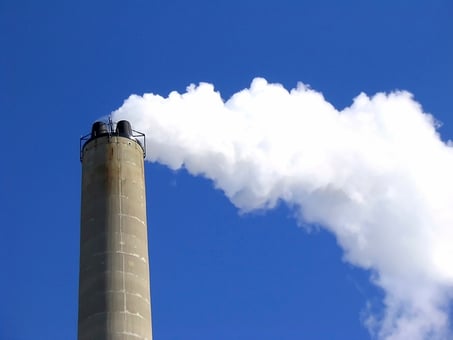
While mercury levels in rainfall and other forms of precipitation have fallen along the East Coast, other sites in the center of North America are reporting increased levels of the toxic element, pushing overall trends for the continent in a positive direction.
A group of researchers from the United States and Canada, including UC Santa Cruz, the U.S. Geological Survey (USGS), and the Meteorological Service of Canada, published a study in the journal Science of the Total Environment in January 2016 that attributes the decline along the East Coast to decreased emissions of coal burning in North American. Unfortunately, decrease in emissions in the United States and Canada is being countered by an upward trend of mercury emissions in other parts of the world, particularly Asia.
A recent post in the UC Santa Cruz newsroom cited the hazards of mercury when it is spread through precipitation:
“Mercury is a toxic element released into the environment through a variety of human activities, including the burning of coal, as well as by natural processes. Rainfall washes mercury out of the atmosphere and into soils and surface waters. Bacteria convert elemental mercury into a more toxic form, methyl mercury, which becomes increasingly concentrated in organisms higher up the food chain. Mercury concentrations in some predatory fish are high enough to raise health concerns.”
As part of the study, researchers gathered and analyzed data from network monitoring sites across the United States. Samples from the monitoring sites are analyzed for mercury, sulfate, nitrate, and other pollutants. The data from the East Coast dates back to 1997 while sites in Midwest, Rocky Mountain, and West Coast were added more recently.
Mark Brigham, of the USGS and co-author of the study, “noted that the findings are broadly consistent with other recent reports of decreasing atmospheric mercury deposition in North America since about 1997, but with a new twist.”
He said, "By examining trends in more detailed time increments and more geographic detail, we saw that in recent years the long-term decreasing trend has leveled off, and some sites in the western U.S. are even seeing increases, which we think is due to increasing mercury emissions from Asia. So the reductions in North American mercury emissions are primarily benefiting the eastern U.S., where there is a greater concentration of emissions."
Highlights from the study included:
- 53%/0% of sites had negative/positive trends in mercury wet deposition for 1997–2013.
- 6%/30% of sites had negative/positive trends in mercury wet deposition for 2008–2013.
- Regional trend analyses revealed significant positive trends in Hg concentration in the Rocky Mountains, Plains, and Upper Midwest regions for the recent time periods in addition to significant positive trends in Hg deposition for the continent as a whole.
Researchers concluded that mercury emissions in the U.S. and Canada are not the cause for the observed upward tendencies in mercury concentrations.
Mercury analyzers are an important element used in laboratories today. There are a variety of applications where Mercury instruments are best suited. For more information on these analyzers and how they can help with your mercury analysis needs, please contact us.
 or visit our website
or visit our website
